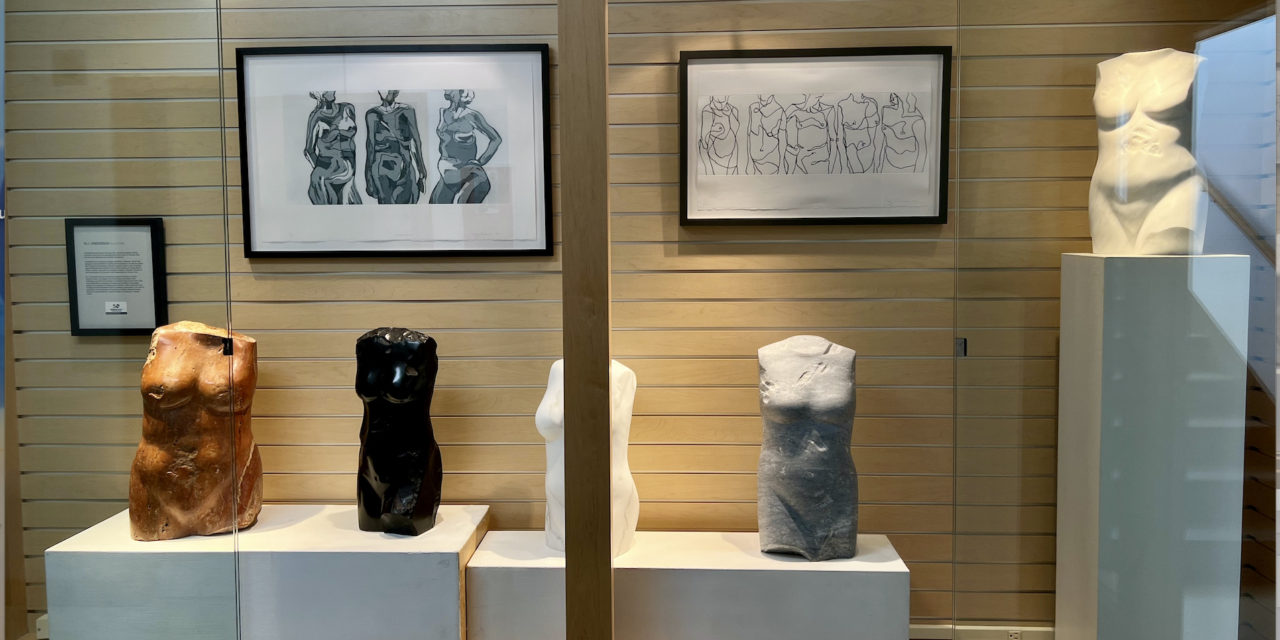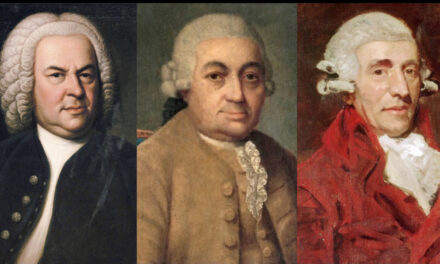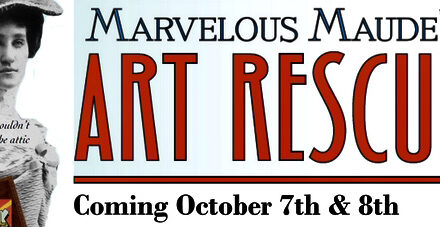(Above: Convergence, an exhibit at the Newport Visual Arts Center of sculpture and etchings by M.J. Anderson; photos by Jordan Essoe)
By Jordan Essoe
Nehalem-based artist M.J. Anderson’s compact new show at the Newport Visual Arts Center consists of five marble sculptures and two etchings. This selection of mostly recent work showcases the subject Anderson is best known for: a limbless and headless female torso.
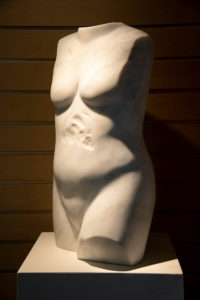
Many of M.J. Anderson’s torso sculptures carry signs of the wear-and-tear of life experience; photo by Jordan Essoe
The surface of the sculptures is primarily polished smooth, but interrupted by fissures, gashes, and breakages. These textures imply decay, neglect, or violence, but Anderson deploys the effect aesthetically. The end result is wear-and-tear that both looks intentional and is graphically pleasing. A postmodern reading is possible, but of course a more immediate connection is drawn to the language of antiquity and the prototypical broken forms of ancient Greco-Roman statuary.
Anderson’s referential relationship with traditional Western art history is somewhat baked into her process. She works part of every year in Carrara, Italy, where she acquires marble and other raw rock forms from local quarries and stone yards. She begins carving and chiseling in a studio she walks to via a route she describes as “the same small road Michelangelo used to bring down his marble from the quarry to the sea.”
Her dialogue with museum relics is further navigated by the physical installation inside the second-floor exhibition area that the Newport Visual Arts Center calls its Coastal Oregon Visual Artist Showcase. The corridor space is essentially a large display case and it positions all of the objects behind glass. It works well for Anderson’s show and enhances some of its virtues. An idiosyncrasy of the installation is that from many angles a central wooden division partially obscures Immaculata II, a work made from a gorgeously veined marble called paonazzo. The wooden bar becomes not only an added interruption in the torso’s form, but also a circumstantial physical manifestation of another kind of vein running through the work – the relationship with the construct of the display case itself.
Anderson titles the exhibition Convergence. One of the most enticing intersections arrived at through her sculpture is the meeting point between the imaginative possibilities of history and the imaginative possibilities of the human body. Anderson’s fantasy about history is clear, and one that could be described as a romance with the erosive power of time. Anderson’s fantasy about form is more complicated, but also a fascinating one. Her treatment of curves and flesh often has sensual power, but she insists she is attempting no such thing.
“My intention is to say, this a female, unapologetic in her being, not sitting around here to tantalize you,” Anderson said to Eugene Scene.
After spending a few minutes with the sculptures, you start to notice that Anderson’s women aren’t just missing their faces, heads, arms, and legs. Although they are depicted as nude, they are missing navels and nipples. This is a departure from classical nude statues like those depicting the goddess Aphrodite, but Anderson’s nudes share with it a smooth doll-like mound covering the pubis.
“When you put nipples and stuff, that basically says this is a figure to be lusted for, unless there is a baby attached to one of them,” Anderson said. “So much of the female figure is from the male perspective. Where she is twisted and turning, so her arm is up and the breast falls languidly into someone’s mouth. I don’t do that. That’s not my intention.”
Curiously, Anderson’s abridged contours also include a relatively featureless area above the breasts that seems to mostly redact the collar bones – not typically considered a prurient detail. In the sculpture Fortuna, created from a terracotta-colored limestone called suriya travertine, there are textured craters on both breasts that appear as if someone has taken a hammer to the areas that might contain nipples and cracked them off.
If the goal is to sterilize the nude, why not chisel off the breasts in entirety? One wants to ask, why draw the line at the nipple, and what does it mean to do so? A similar crater scars the area of the navel. Viewers may want to avoid the conclusion that Anderson is motivated by a squeamishness or suspicion about the female body.
“I’m thinking of what it feels like to be a woman rather than what it looks like to be a woman,” Anderson said. “Mentally, I’m doing the female torso from the inside out.”
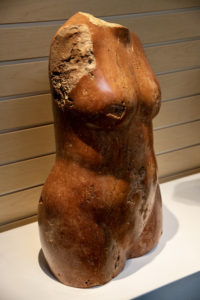
The torsos in Anderson’s Convergence exhibit represent human bodies and experiences ranging from white to brown to black; photo by Jordan Essoe
The limited color palette of the exhibition is organic and suggestive of racial harmony. One torso appears to have bronze skin, one black, one white, one gray, and the last off-white. The population of five truncated women all face out, sharing a certain measure of joint solitude.
Anderson is interested in creating work that speaks to universalities, and says this is another reason why she excludes heads and faces from most of her figurative sculptures. She doesn’t want to limit the audience’s ability to relate to the subjects she is offering.
In the etchings of the show, slightly more anatomy emerges. Titled Abundance and Ensemble, these prints were created during a Jordan Schnitzer Printmaking Residency that Anderson completed at the Sitka Center for Art and Ecology in 2012. Both pictures feature gestural drawings of women’s torsos wherein Anderson includes arms, hands, necks, and even chins, nipples, navels, and a few collar bones. Perhaps drawing, with its single fixed angle from which to present form, allows more of the women’s bodies to be excavated.
Abundance features a sequence of three coarsely shaded drawings of the same model and Ensemble depicts five separate women drawn in almost continuous line, as if they were made from wire. The weightlessness of the mark making in Ensemble claims a striking contrast to the heftiness of the marble, Anderson’s favorite medium, which she points out weighs 150 pounds per cubic foot.
Anderson is a talented sculptor, and Convergence is a thought-provoking show. The work contains a wealth of aesthetics and ideas that will have you asking questions about partiality versus universality, history versus “history,” and prurience versus Bowdlerization (defined as the removal of improper or offensive material and named for English physician Thomas Bowdler, 1754-1825, who with his sister, Henrietta, published The Family Shakespeare, which excluded the Bard’s use of sexual innuendo and double entendre. )
Convergence
When: Feb. 12 through March 26, 2022; the artist will give a talk at 2 p.m. on opening day
Where: Newport Visual Arts Center, 777 NW Beach Drive, Newport, Ore.
https://coastarts.org/visual-arts-center/about/Gallery hours: Noon to 4 p.m. Wednesday through Saturday
Information: 541-265-6540 or https://coastarts.org/visual-arts-center/about/
More coastal arts opportunities: coastarts.org

